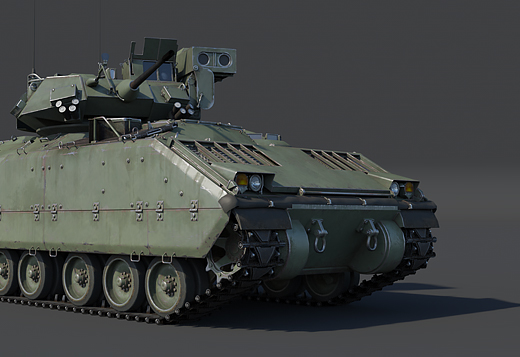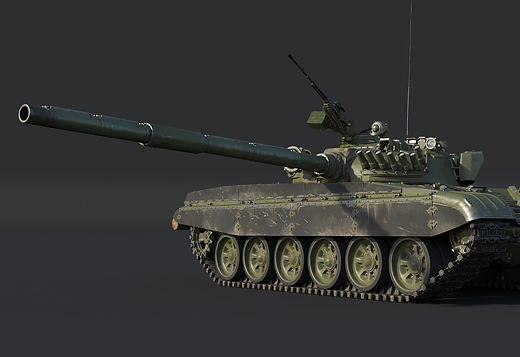
- For PC
- For MAC
- For Linux
- OS: Windows 10 (64 bit)
- Processor: Dual-Core 2.2 GHz
- Memory: 4GB
- Video Card: DirectX 11 level video card: AMD Radeon 77XX / NVIDIA GeForce GTX 660. The minimum supported resolution for the game is 720p.
- Network: Broadband Internet connection
- Hard Drive: 23.1 GB (Minimal client)
- OS: Windows 10/11 (64 bit)
- Processor: Intel Core i5 or Ryzen 5 3600 and better
- Memory: 16 GB and more
- Video Card: DirectX 11 level video card or higher and drivers: Nvidia GeForce 1060 and higher, Radeon RX 570 and higher
- Network: Broadband Internet connection
- Hard Drive: 75.9 GB (Full client)
- OS: Mac OS Big Sur 11.0 or newer
- Processor: Core i5, minimum 2.2GHz (Intel Xeon is not supported)
- Memory: 6 GB
- Video Card: Intel Iris Pro 5200 (Mac), or analog from AMD/Nvidia for Mac. Minimum supported resolution for the game is 720p with Metal support.
- Network: Broadband Internet connection
- Hard Drive: 22.1 GB (Minimal client)
- OS: Mac OS Big Sur 11.0 or newer
- Processor: Core i7 (Intel Xeon is not supported)
- Memory: 8 GB
- Video Card: Radeon Vega II or higher with Metal support.
- Network: Broadband Internet connection
- Hard Drive: 62.2 GB (Full client)
- OS: Most modern 64bit Linux distributions
- Processor: Dual-Core 2.4 GHz
- Memory: 4 GB
- Video Card: NVIDIA 660 with latest proprietary drivers (not older than 6 months) / similar AMD with latest proprietary drivers (not older than 6 months; the minimum supported resolution for the game is 720p) with Vulkan support.
- Network: Broadband Internet connection
- Hard Drive: 22.1 GB (Minimal client)
- OS: Ubuntu 20.04 64bit
- Processor: Intel Core i7
- Memory: 16 GB
- Video Card: NVIDIA 1060 with latest proprietary drivers (not older than 6 months) / similar AMD (Radeon RX 570) with latest proprietary drivers (not older than 6 months) with Vulkan support.
- Network: Broadband Internet connection
- Hard Drive: 62.2 GB (Full client)
War Thunder update 1.85, which we’ve called “Supersonic”, introduces a new kind of weapon to the game: air-to-air missiles. Early models of these missiles, including the American AIM-9B Sidewinder, the Soviet P-3C, and the British Firestreak, will become available for particular aircraft. Some helicopters in the game will also get air-to-air missiles, but more modern types. Why are helicopters getting better missiles, you ask? We explained it all in the Developer Diary entry “The Future of Aircraft in War Thunder: Supersonic Jet Aircraft and Air-to-air Missiles.”
All current air-to-air missiles in update 1.85 have an infrared guidance system with a target-tracking indicator – the missile is aimed using the method of proportional navigation along the shortest trajectory in order to directly intercept the target. Since the guided warheads of early missiles only react to heat generated by hot gasses from engines, targeting is only effective against the rear hemisphere of aircraft and less effectively other angles. Early air-to-air missiles could reliably lock onto the thermal signature of jet engines, turboshaft engines, and powerful piston engines. Many WWII-era biplanes and other aircraft, for example, are thus invisible to guided missiles at long range. The homing system of newer missiles are all-aspect, which means that they can also intercept heat given off by the bodies of aircraft and can even be used from the frontal hemisphere. Since various kinds of radiation can be detected within the infrared spectrum, missiles can, depending on the features of their design, react to some degree to the sun, heat traps, and active electro-optical countermeasures.
The target-tracking indicator of some missiles was always strictly focused along the missile’s axis prior to launch, and the missile could only be fired if the pilot kept the target within his sights. In other aircraft, the indicator tracked the target, and the aircraft carrying it could manoeuvre within a certain sector relative to it. This made it possible to lead while firing a missile, thus improving the starting conditions for it when firing at targets on intercept courses. We’ve reconstructed these nuances in the game by setting different targeting ranges for various missile models.
When it comes to other nuances related to aiming, locking on, and holding a target, it’s important to remember that a guided missile has a preparatory period of “warming up” its electronics and launching gyro sensors. The guided warhead remains in target-search mode for a limited time, then turns off. The pattern for using guided air-to-air missiles therefore looks like this: you maneuver into an attack position, activate the guided missile, and wait for it to turn on. You then have a limited amount of time to target an enemy and fire before the missile turns back off and you have to start the process over again. In the menu, you can assign one key to prep the guided missile to targeting and another one to fire the missile itself. Targeting range in near-ideal conditions (the target is a jet fighter in WEP, i.e. it “lights up” easily, is moving in a straight line, and lock-on occurs from the rear hemisphere from the trajectory of the target’s movement) is about 4,000 metres, and the range for a reliable lock-on is about 2,500 metres.
Air-to-air missiles have a proximity fuse that goes off while meeting an aircraft or the ground. When a missile approaches the target, it detonates, generating a directed or undirected stream of shrapnel that strikes the target. A missile that does not reach the target will self-destruct after a certain period of time.
So we know how to lock onto and hit a target, but how can we evade an attack? First of all, you can escape by manoeuvring. Early missiles weren’t able to stay locked onto manoeuvring targets because they couldn’t sustain the required G-force while in flight and follow quickly-moving targets, but later missiles have better flight characteristics. To imitate the pilot visual detection, all aircraft and helicopters in the game will get an alarm that goes off when an air-to-air missile is approaching – including models that didn’t actually have such systems installed on them. How early the missile alarm goes off depends on the crew’s skill. Passive defence course, i.e. anti-missile manoeuvring, became a mandatory part of pilots’ training immediately after air-to-air missiles appeared on the battlefield, and pilots in War Thunder will also benefit from acquiring these skills. Early missiles had a limited G-force threshold and your average fighter jet should be able to outmaneuver them, if you react early enough. If you get a missile warning, start your defensive maneuvers right away ! The missile cannot perform sharp turns and will lose sight of you.
Your other option is to deceive the missile guidance system. In the update 1.85 titled "Supersonic", certain helicopters will be equipped with flares, generating false heat signature. Those “heat traps” that draw the missile “attention” and lead it away. Helicopters will also get jammers generating electro-optical interference, as well as screening exhaust devices. These countermeasures can increase the target acquisition time in the infrared spectrum. As a last resort, cutting the engine power can help against certain missile models and make it lose the target.
Both flares and IRCM have been implemented in the game as realistically as possible. Flares generate a heat signature that resembles the heat from an engine. If even one of these false targets falls within the field of view of a missile’s guided warhead, the missile will head toward a point between the two targets. IRCM generates a large number of chaotic IR signals that are visible in certain sectors from the target and make it more difficult for a guided warhead to hit its target within those sectors. IRCM works with maximum efficiency only against missiles whose guidance system is not hardened against such interferences.
Air-to-Air missiles represent an important milestone in the history of aerial warfare. We've tried our best to make sure that this new and exciting type of weapon fits well into the air and combined battles of War Thunder. We hope you like them as much as we do.
Check other 1.85 "Supersonic" Devblogs:


























Comments (77)
FOX 2 is the US code for launch of a Heat Seeking missile. (FOX 1, 3, and 4 also exist) :^)
Ruhrstahl-Kramer RK 344 X-4 rank 4 German guided A2A missile when???
Perhaps no warning would be too hardcore, but currently absolutely zero situational awareness is required, and given the incredibly limited nature of current missiles, it means anyone who isn't AFK or doesn't purposely choose to roll the dice on not really maneuvering has too much advance warning. Instead of a GIANT "ROCKET HAS BEEN LAUNCHED", have a little "MSL" (just like temperature warnings) flashing just below your offensive missile information if you've been launched at.
Submit a complaint